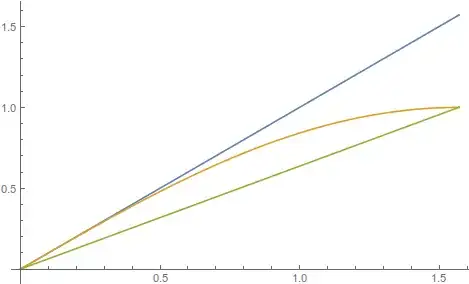Modest hint: use convexity (actually, here, concavity) of the function $\sin$ on $[0,\frac{\pi}{2}]$.
Followup hint: (place your mouse on the hidden text to reveal it)
A concave function is below its tangents and above its "secants" (linear functions obtained by joining two points of its graph).
Followup hint: (place your mouse on the hidden text to reveal it)
By concavity, $\sin x \leq \sin 0 + \sin'(0)x$ (tangent at $0$) and $\sin x \geq \frac{2}{\pi}$ (line joining $(0,\sin 0)$ and $(\frac{\pi}{2}, \sin \frac{\pi}{2}$).
Here is an illustration showing the three graphs ($x\mapsto x$, $x\mapsto \sin x$, $x\mapsto \frac{2}{\pi}x$):

